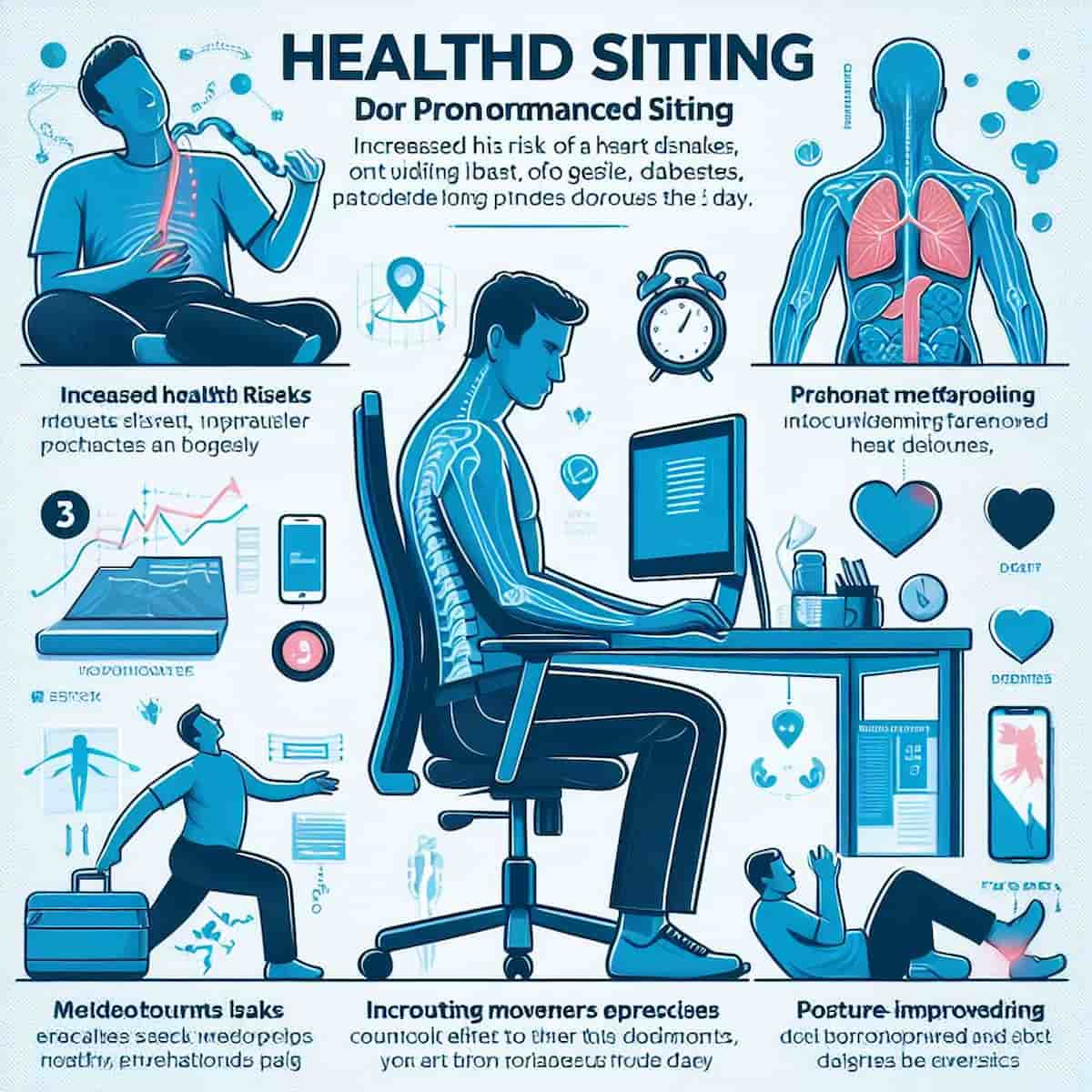Are you aware of the hidden dangers lurking in the seemingly harmless act of sitting for extended periods? In today’s predominantly sedentary lifestyles, where sitting has become the default posture for work, leisure, and relaxation, it’s imperative to shine a spotlight on the risks associated with too much sitting. Let’s delve into the perils of prolonged sedentary behavior and empower ourselves with the knowledge to break free from its grasp.
Key Takeaways:
- Excessive sitting is linked to a multitude of health risks, including obesity, cardiovascular disease, type 2 diabetes, musculoskeletal issues, mental health disorders, and overall mortality.
- Prolonged sedentary behavior can have detrimental effects on physical health, mental well-being, and overall quality of life.
- Breaking up sitting time, incorporating regular movement breaks, and prioritizing physical activity are essential strategies to mitigate the risks of too much sitting.
Unveiling the Dangers:
The sedentary lifestyle epidemic poses significant threats to health and longevity, with excessive sitting contributing to a host of adverse outcomes:
1. Obesity and Weight Gain:
- Energy Imbalance: Prolonged sitting reduces energy expenditure, leading to an imbalance between calories consumed and calories burned.
- Increased Fat Storage: Sedentary behavior promotes fat accumulation, particularly around the abdomen, contributing to weight gain and obesity.
2. Cardiovascular Disease:
- Reduced Blood Flow: Sitting for long periods impairs blood circulation and increases the risk of blood clots and arterial plaque buildup.
- Elevated Heart Disease Risk: Excessive sitting is associated with elevated levels of cholesterol, blood pressure, and inflammation, predisposing individuals to cardiovascular disease.
3. Type 2 Diabetes:
- Impaired Glucose Metabolism: Sedentary lifestyles impair insulin sensitivity and glucose metabolism, raising the risk of developing type 2 diabetes.
- Increased Insulin Resistance: Prolonged sitting contributes to insulin resistance, a key factor in the pathogenesis of type 2 diabetes.
4. Musculoskeletal Issues:
- Muscle Imbalances: Sitting for extended periods leads to muscle stiffness, weakness, and imbalances, particularly in the back, neck, and hips.
- Poor Posture: Prolonged sitting contributes to poor posture, spinal misalignment, and increased risk of musculoskeletal pain and injuries.
5. Mental Health Disorders:
- Anxiety and Depression: Sedentary behavior is associated with higher rates of anxiety, depression, and psychological distress.
- Reduced Well-being: Excessive sitting can negatively impact mood, cognitive function, and overall mental well-being.
6. Overall Mortality:
- Increased Risk of Premature Death: Studies have linked prolonged sitting with higher mortality rates and a shorter lifespan, independent of other risk factors.
Mitigating the Risks:
While the risks of too much sitting may seem daunting, there are actionable steps we can take to protect our health and well-being:
1. Break Up Sitting Time:
- Take regular breaks to stand, stretch, and move around, aiming to interrupt prolonged sitting every 30 minutes to an hour.
- Set reminders or use activity trackers to prompt movement breaks throughout the day.
2. Incorporate Physical Activity:
- Aim for at least 150 minutes of moderate-intensity aerobic activity or 75 minutes of vigorous-intensity activity each week.
- Find activities you enjoy and make them a regular part of your routine to counteract the effects of prolonged sitting.
3. Prioritize Posture and Ergonomics:
- Maintain good posture while sitting, with your feet flat on the floor, knees bent at a 90-degree angle, and spine aligned.
- Use ergonomic furniture, supportive chairs, and adjustable workstations to create a comfortable and conducive environment for work and leisure.
4. Stay Mindful and Active:
- Cultivate mindfulness of your sitting habits and make conscious efforts to reduce prolonged sedentary behavior throughout the day.
- Engage in activities that promote movement, social interaction, and mental stimulation to enhance overall well-being.
Conclusion:
Excessive sitting poses significant risks to health and longevity, but by understanding the dangers and taking proactive steps to mitigate them, we can safeguard our well-being and vitality. By breaking up sitting time, incorporating regular physical activity, prioritizing posture and ergonomics, and staying mindful and active, we can counteract the negative effects of prolonged sedentary behavior and embrace a healthier, more vibrant lifestyle. Remember, every movement counts, so let’s rise from our seats and take charge of our health and happiness one step at a time.













